Overview
The article addresses the critical strategies that regulatory companies can adopt to enhance compliance. It underscores the necessity of integrating innovative technologies and methodologies to meet the challenges of today’s regulatory landscape. Various approaches are outlined, including:
- Rapid MVP development
- The incorporation of AI agents
- Tailored training programs
These strategies are specifically designed to streamline compliance processes and effectively adapt to evolving regulatory requirements. By implementing these methods, companies can not only ensure compliance but also position themselves as leaders in their industry.
Introduction
In a landscape where regulatory compliance is increasingly complex, organizations encounter a pressing challenge: adapting to ever-evolving legal requirements. This article explores eight innovative strategies that regulatory companies can implement to enhance their compliance efforts, leveraging cutting-edge technologies and methodologies. As firms strive to maintain adherence, it is essential to consider how they can effectively integrate these strategies while navigating the intricate web of regulations that govern their operations.
Slickbit: Rapid MVP Development for Regulatory Compliance
Slickbit.ai specializes in rapid MVP development for regulatory companies, enabling compliance firms to swiftly validate their AI concepts. By delivering functional prototypes in as little as four weeks, organizations can assess regulatory solutions without enduring lengthy development cycles. This agility empowers teams to adapt quickly to changes set by the regulatory company, ensuring they remain compliant while driving innovation.
For instance, a pharmaceutical firm could develop a minimum viable product for an intelligence tool that streamlines adherence checks, significantly reducing time-to-market and enhancing operational efficiency.
Furthermore, Slickbit's expertise in creating intelligent AI agents and custom AI solutions bolsters organizations in automating tasks and retrieving knowledge, ultimately revolutionizing their operational capabilities.
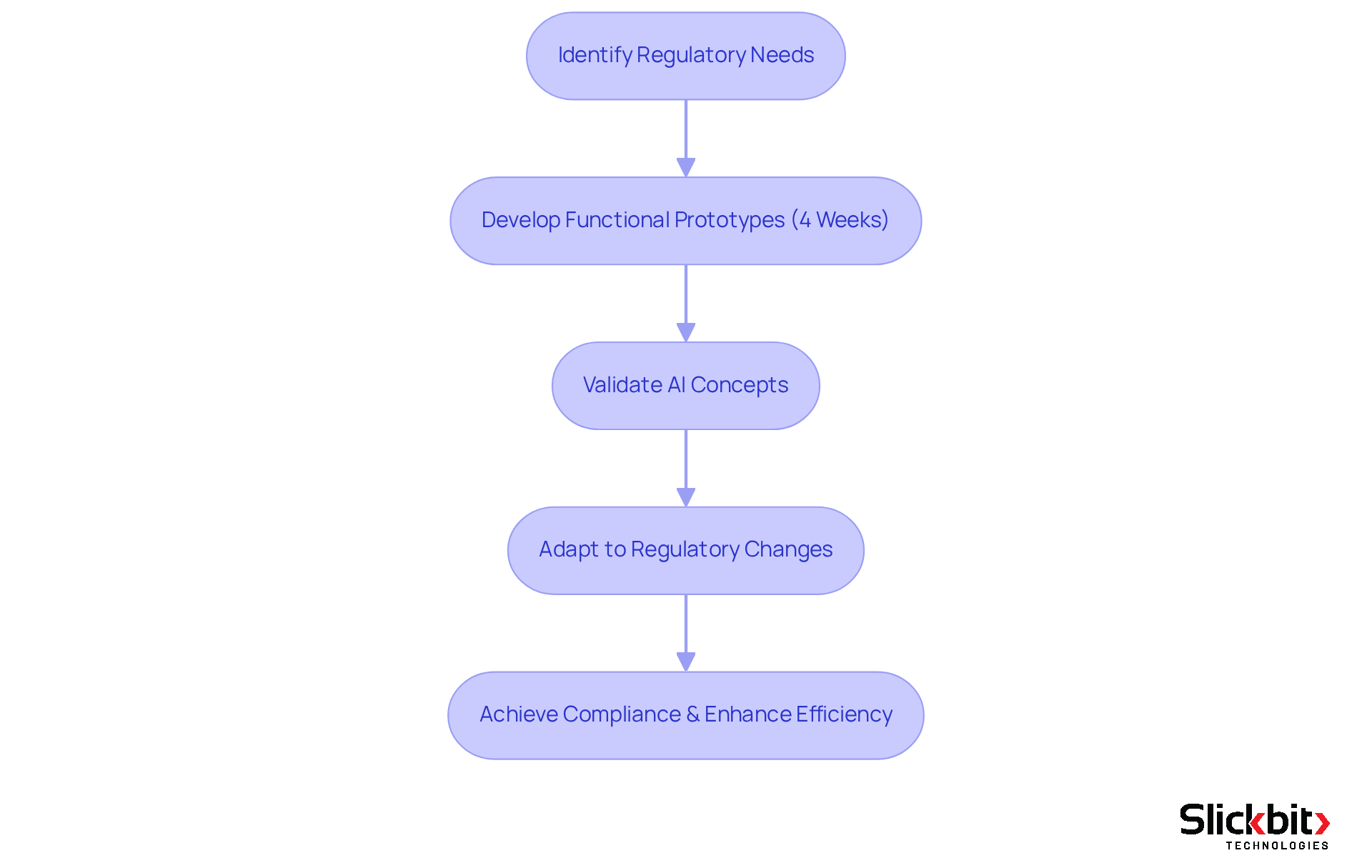
Implement AI Agents for Streamlined Regulatory Workflows
Incorporating AI agents into governance workflows dramatically enhances efficiency by automating repetitive tasks, including data entry, document review, and compliance checks. For instance, Slickbit's Lumino serves as an AI-driven assistant for a regulatory company, enabling pharmaceutical groups to obtain precise, traceable answers from FDA and global guidance documents. Furthermore, Vault Redact automates the identification and removal of PII and PHI from documents, ensuring secure content redaction.
These AI agents operate continuously within the framework set by a regulatory company, minimizing the risk of human error while adapting to the latest regulations. They track compliance updates in real time, allowing teams to focus on strategic decision-making rather than administrative tasks. This proactive approach not only improves operational efficiency but also significantly reduces the likelihood of non-compliance due to oversight.
As expert Narendra Sharma observes, "AI in adherence is shifting from a competitive edge to a legal requirement," underscoring the necessity of adopting such technologies in today's oversight landscape.
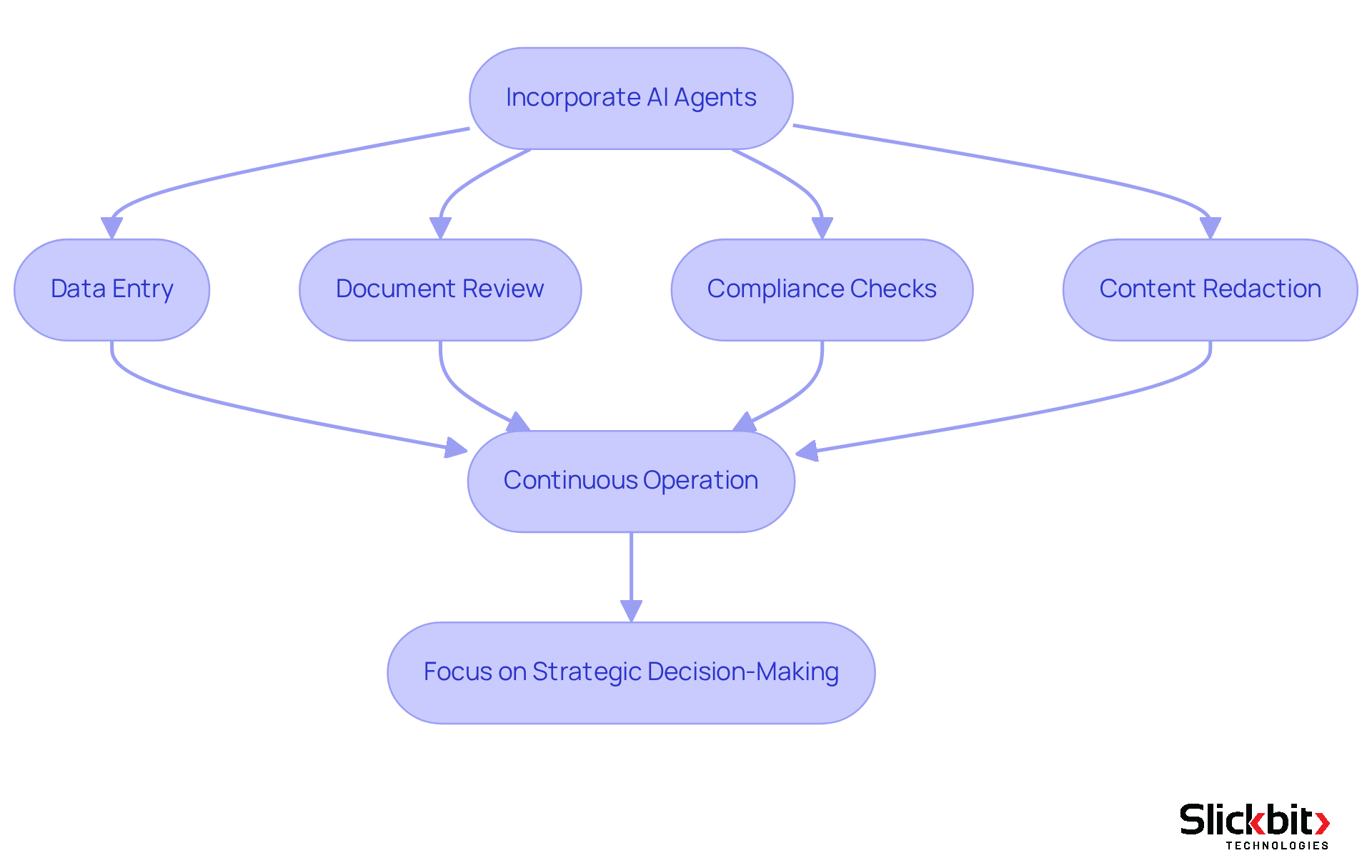
Develop Custom AI Solutions for Domain-Specific Compliance Needs
Tailored AI solutions are essential for a regulatory company aiming to efficiently tackle its specific adherence challenges. For instance, a biotech firm may require a solution that integrates seamlessly with its existing clinical trial management systems, ensuring compliance with FDA regulations.
By leveraging domain-specific data and workflows, these customized solutions not only provide actionable insights but also automate the regulatory reporting processes for a regulatory company. This approach simplifies procedures and significantly enhances the capacity of the regulatory company to meet compliance standards effectively.
As industry leaders note, the integration of AI into adherence practices is transforming how firms navigate complex legal frameworks, making it imperative for businesses to adopt these groundbreaking technologies.
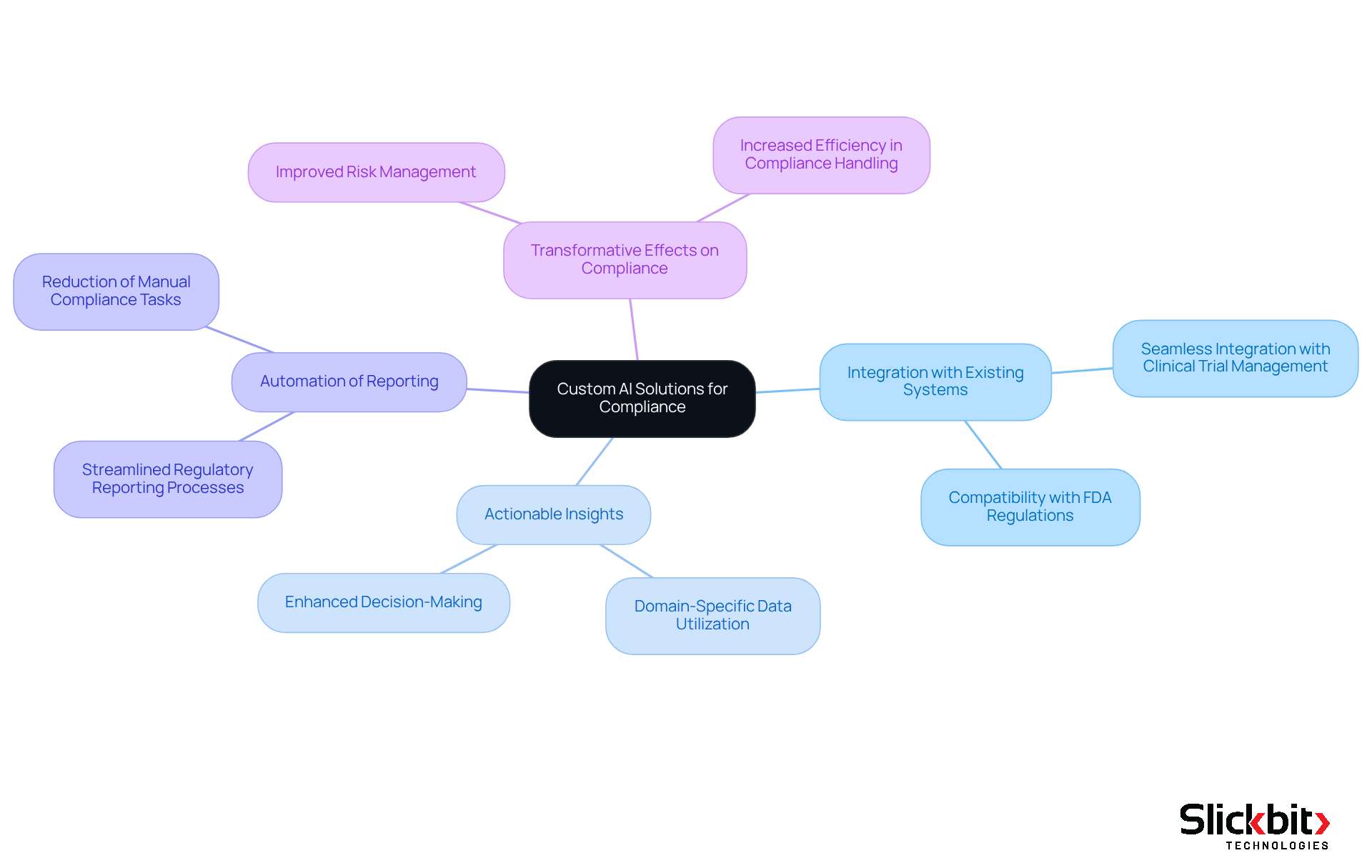
Ensure Seamless Integration with Existing Regulatory Systems
Ensuring seamless integration with the current systems of the regulatory company is crucial for organizations aiming to improve adherence without disrupting their operations. By utilizing APIs and other integration tools, companies can effectively connect new AI solutions, such as Slickbit's Trend 483 tool, with platforms like Veeva or Medidata. This integration facilitates real-time data sharing and regulatory monitoring, ensuring that all systems operate in harmony.
Trend 483 leverages AI to recognize patterns in systemic risks and recurring infractions from FDA 483s, providing deeper insights that can significantly enhance the processes of a regulatory company. Furthermore, the tool allows users to search, filter, and view complete 483s directly, thereby improving the capacity to analyze regulatory company data efficiently.
For instance, incorporating this AI-driven oversight tool with a clinical data management system can enhance data validation processes, lowering the risk of mistakes and ensuring conformity to legal standards.
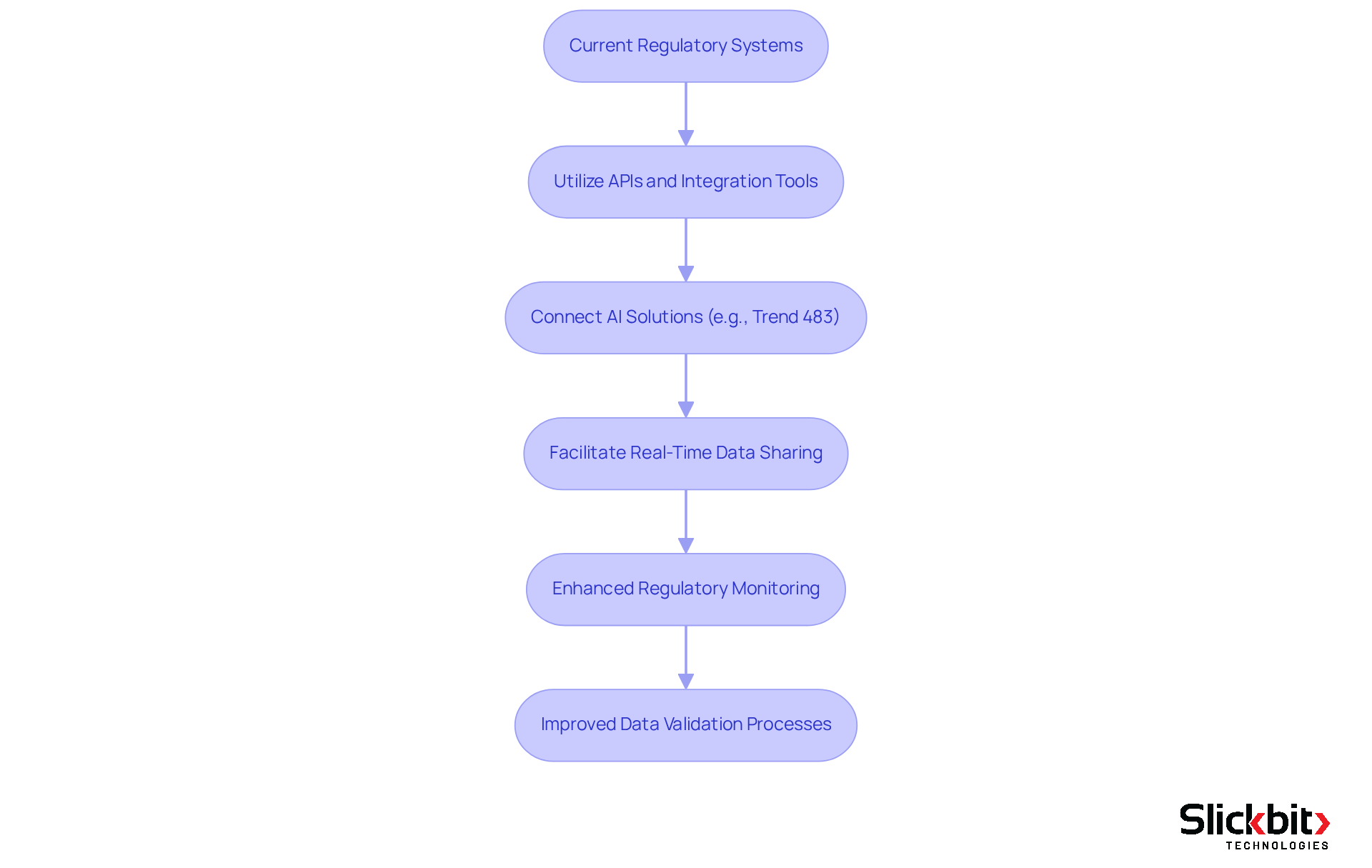
Leverage AI Analytics for Actionable Compliance Insights
Leveraging AI analytics empowers regulatory companies to extract actionable insights from extensive datasets. By utilizing predictive models and natural language processing, organizations can effectively identify compliance trends, potential risks, and improvement opportunities.
For instance, Slickbit's Trend 483 tool employs AI to detect systemic risks and recurring violations from FDA 483s, enabling groups to search, filter, and view complete inspection reports for deeper insights. This capability not only improves visibility throughout compliance processes but also enables real-time risk forecasting, allowing groups to refine their strategies proactively.
Furthermore, an AI analytics tool can examine historical adherence data to predict future governance challenges, such as document gaps or emerging policy trends, enabling teams to foresee issues before they escalate. This data-driven approach not only strengthens adherence but also facilitates informed decision-making across the organization.
The incorporation of predictive analytics greatly enhances risk management for a regulatory company, enabling it to achieve quicker submissions and reduced costs, ultimately ensuring alignment with evolving legal standards.
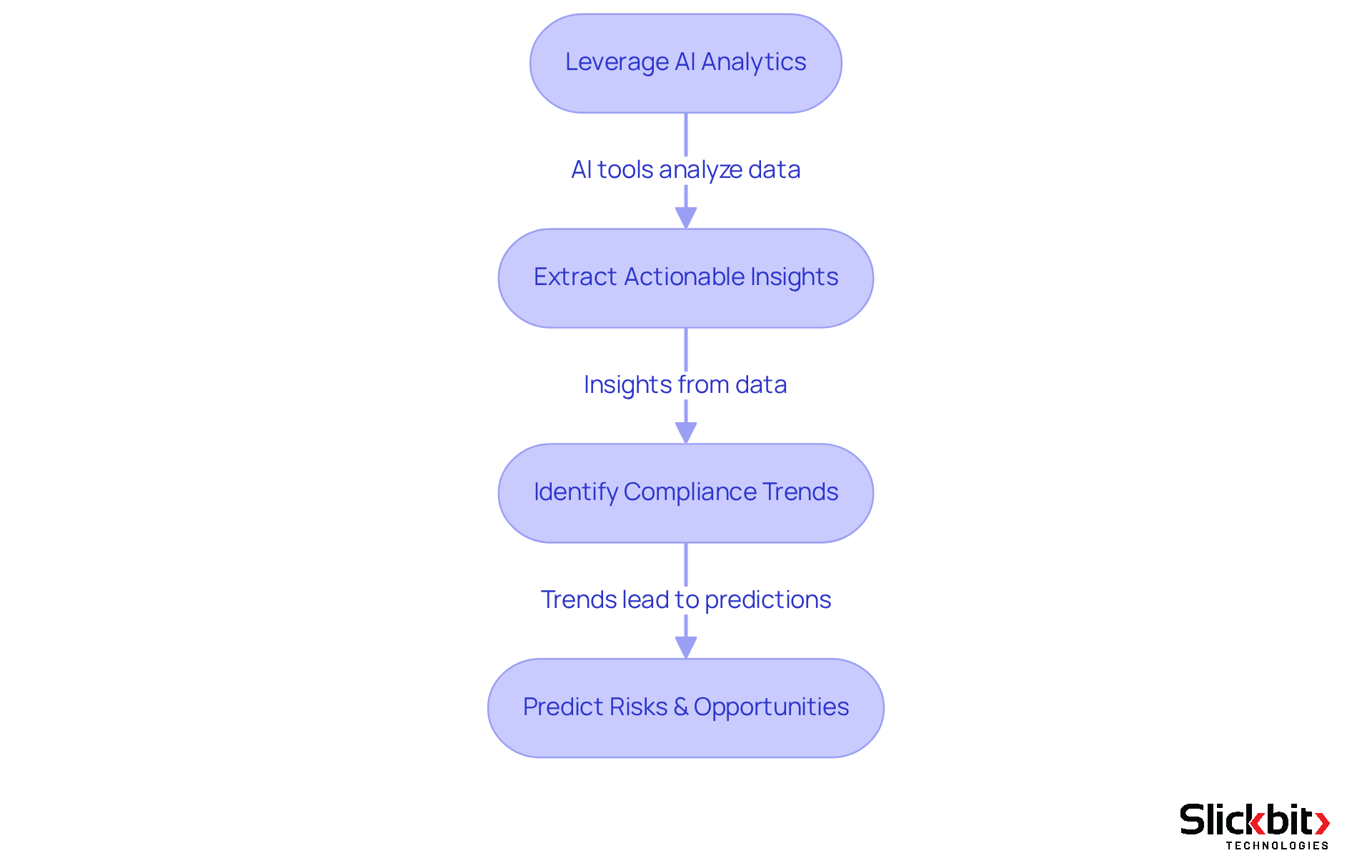
Conduct Tailored AI Training for Enhanced Compliance Skills
Implementing customized AI training initiatives is essential for enhancing adherence abilities within oversight teams. By focusing on specific AI tools, such as Slickbit's Trend 483—which detects trends in systemic risks and regulations from FDA 483s—organizations empower employees to utilize these resources effectively. Training sessions should cover:
- How to interpret AI-generated adherence reports
- How to leverage AI agents for monitoring rule changes
Furthermore, the AI system captures guest information, checks table availability, and manages reservations, demonstrating how insights from AI can streamline hospitality operations and improve overall operational efficiency. This targeted training not only bolsters employee confidence but also ensures that the regulatory company executes processes accurately and efficiently.
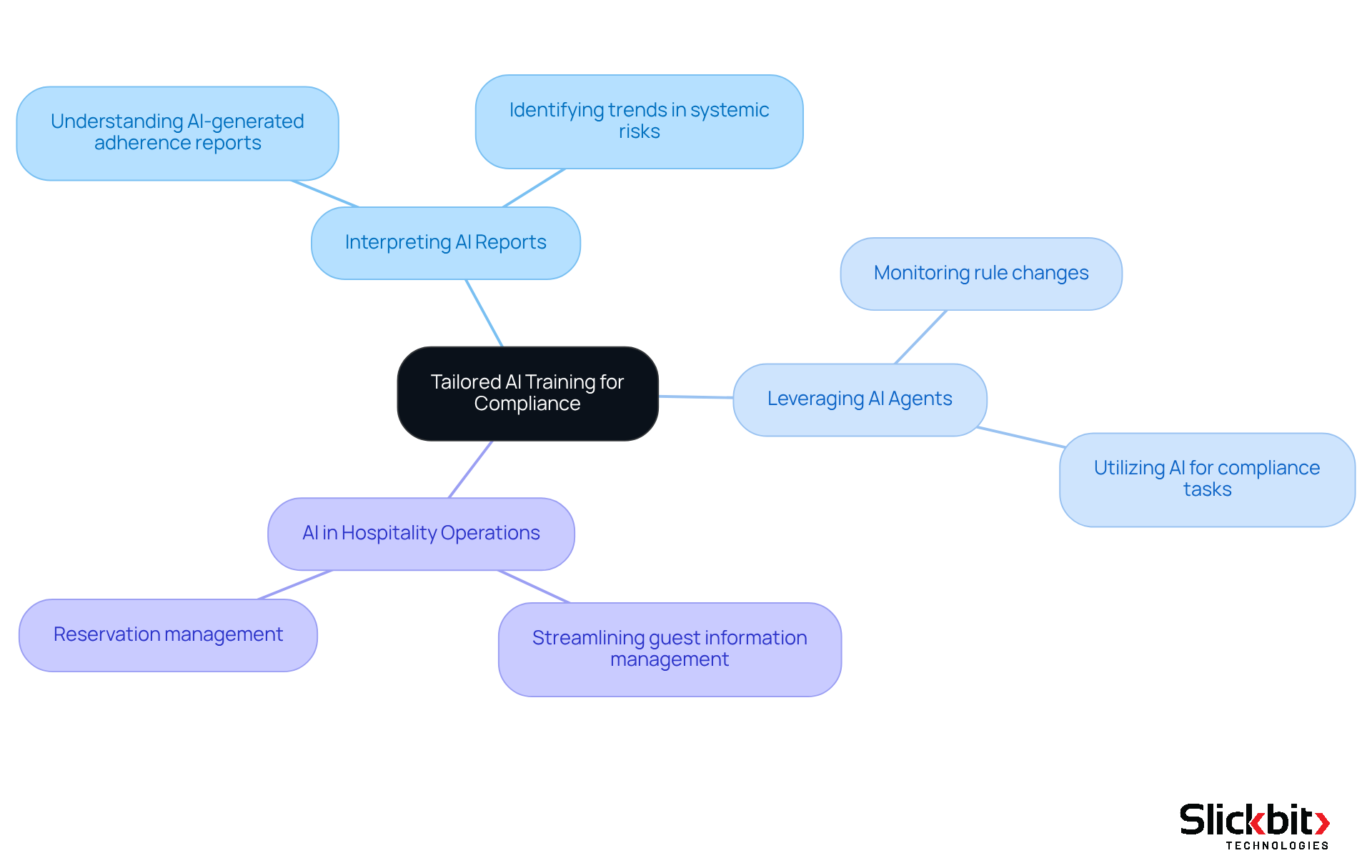
Create Applications for Regulatory Intelligence and Compliance
Creating applications designed for oversight intelligence is essential for strengthening adherence initiatives. These applications merge data from various governing sources, delivering real-time insights into adherence responsibilities.
For instance, Slickbit's AI-driven Compliance Intelligence assistant empowers pharmaceutical groups to obtain precise, traceable information from FDA and global guidance documents, ensuring they remain updated on policy changes that may impact their operations.
Furthermore, the Trend 483 tool utilizes AI to identify patterns in systemic risks and regulatory challenges, enabling regulatory companies to adapt swiftly to evolving regulations. By centralizing compliance information, regulatory companies enhance their agility and significantly mitigate the risk of non-adherence.
The incorporation of real-time oversight monitoring tools allows oversight teams to maintain control and respond rapidly to changing regulations imposed by the regulatory company, ultimately fostering a proactive adherence culture. Utilizing such tools simplifies adherence procedures and transforms them into a strategic advantage, enabling entities to navigate the intricate legal landscape with confidence.
Tools like the AI-powered Regulatory Assistant, Trend 483, Vault Redact, and the AI summarizer illustrate how companies can leverage AI to achieve seamless cross-referencing across global standards, thereby improving their adherence efforts.
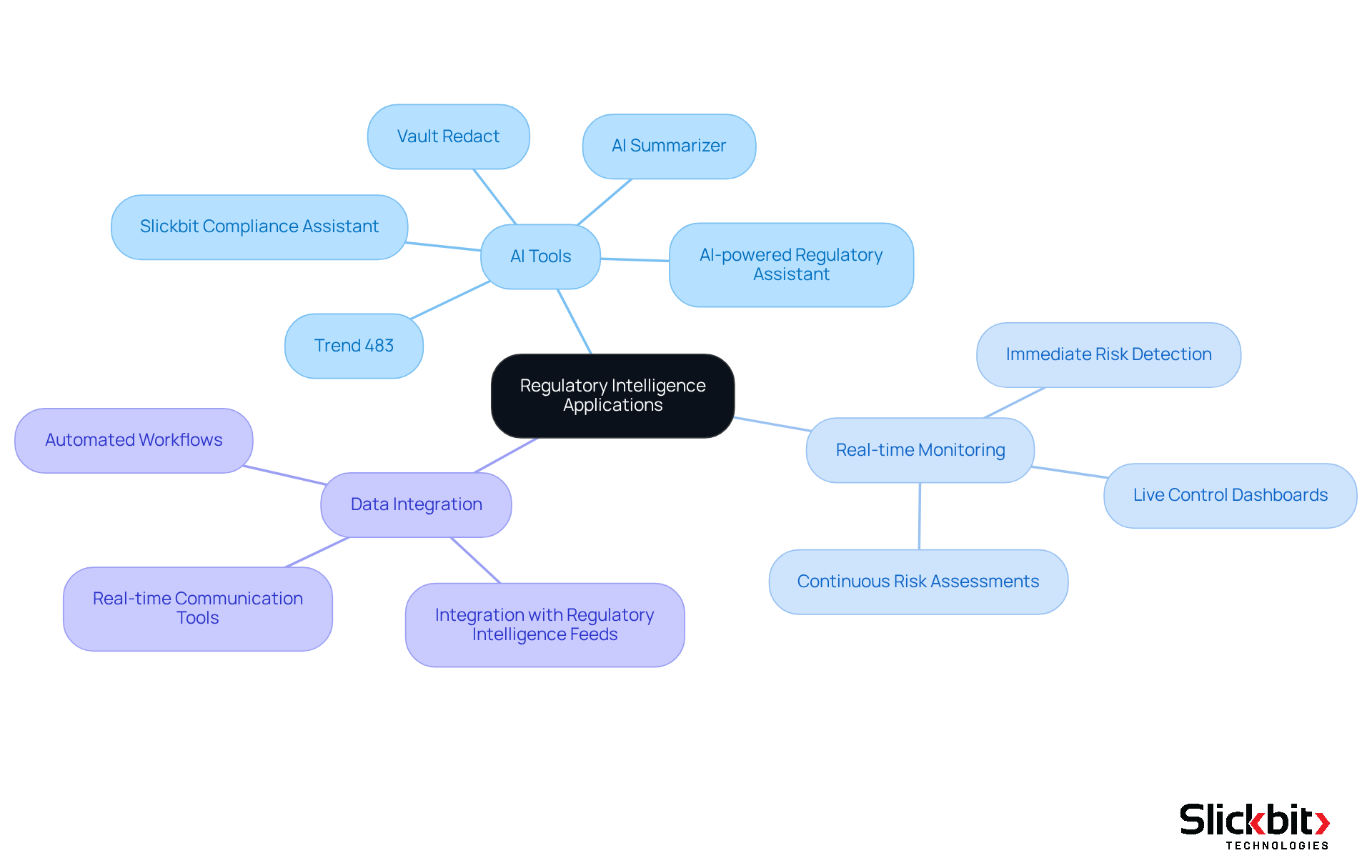
Optimize Project Management for Regulatory Compliance
Enhancing project management procedures is crucial for maintaining legal standards throughout the project lifecycle. By adopting structured approaches and establishing oversight checkpoints, organizations can effectively manage risks and ensure compliance with regulations.
Project management tools with oversight tracking capabilities enable teams to monitor legal requirements at every stage of the project. This proactive strategy not only enhances adherence but also cultivates a culture of accountability and transparency within the organization.
Industry experts assert that incorporating compliance strategies into project management processes allows companies to:
- Identify risks early
- Respond swiftly to changes in guidance
- Ensure that documentation is always audit-ready
Furthermore, organizations that prioritize adherence tracking can significantly mitigate project failures, as 67% of projects fail due to an undervaluation of project management and inadequate planning. By integrating adherence into the project framework, teams can align their efforts with legal expectations, ultimately leading to successful project outcomes and timely market entry.
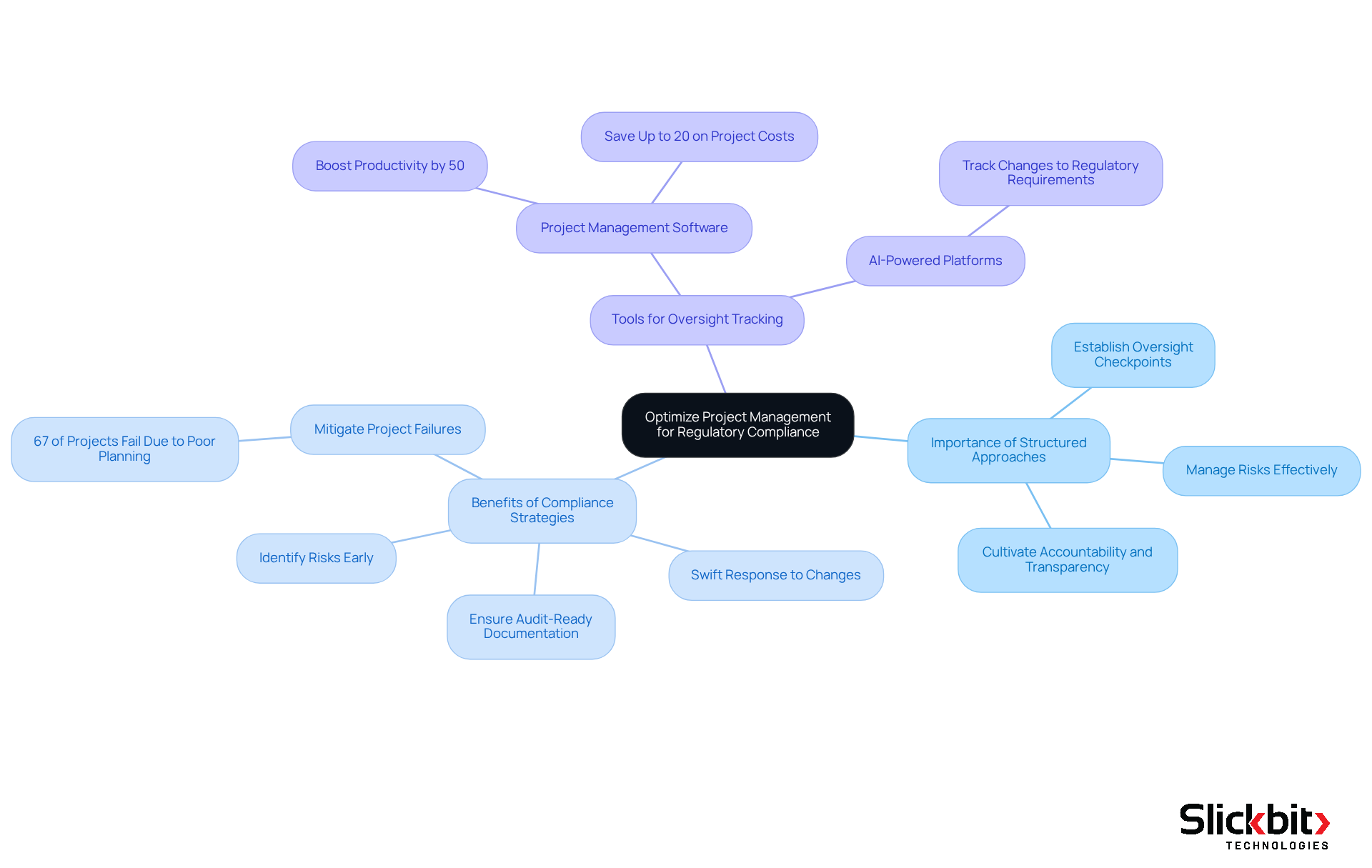
Enhance Cross-Functional Team Coordination for Compliance
Enhancing cross-departmental collaboration is essential for navigating the complex landscape of legal compliance. By fostering teamwork among divisions such as legal, regulatory affairs, and IT, organizations can devise more effective strategies for compliance.
For instance, tools like Slickbit.ai's Trend 483 leverage AI to identify patterns in systemic risks and recurring violations from FDA 483s, thereby directly improving team coordination through actionable insights that inform regulatory discussions.
Regular cross-departmental meetings facilitate knowledge sharing and ensure alignment on the objectives of the regulatory company, which is critical for effective risk management. This collaborative approach not only leads to improved compliance outcomes but also cultivates a culture of accountability and transparency, ultimately strengthening the regulatory framework of the regulatory company.
As governance leaders emphasize, integrating diverse perspectives enhances problem-solving capabilities and stimulates innovation in regulatory affairs.
To implement these strategies successfully, organizations must prioritize the establishment of clear communication channels and accountability frameworks, ensuring that all team members are actively engaged and informed.
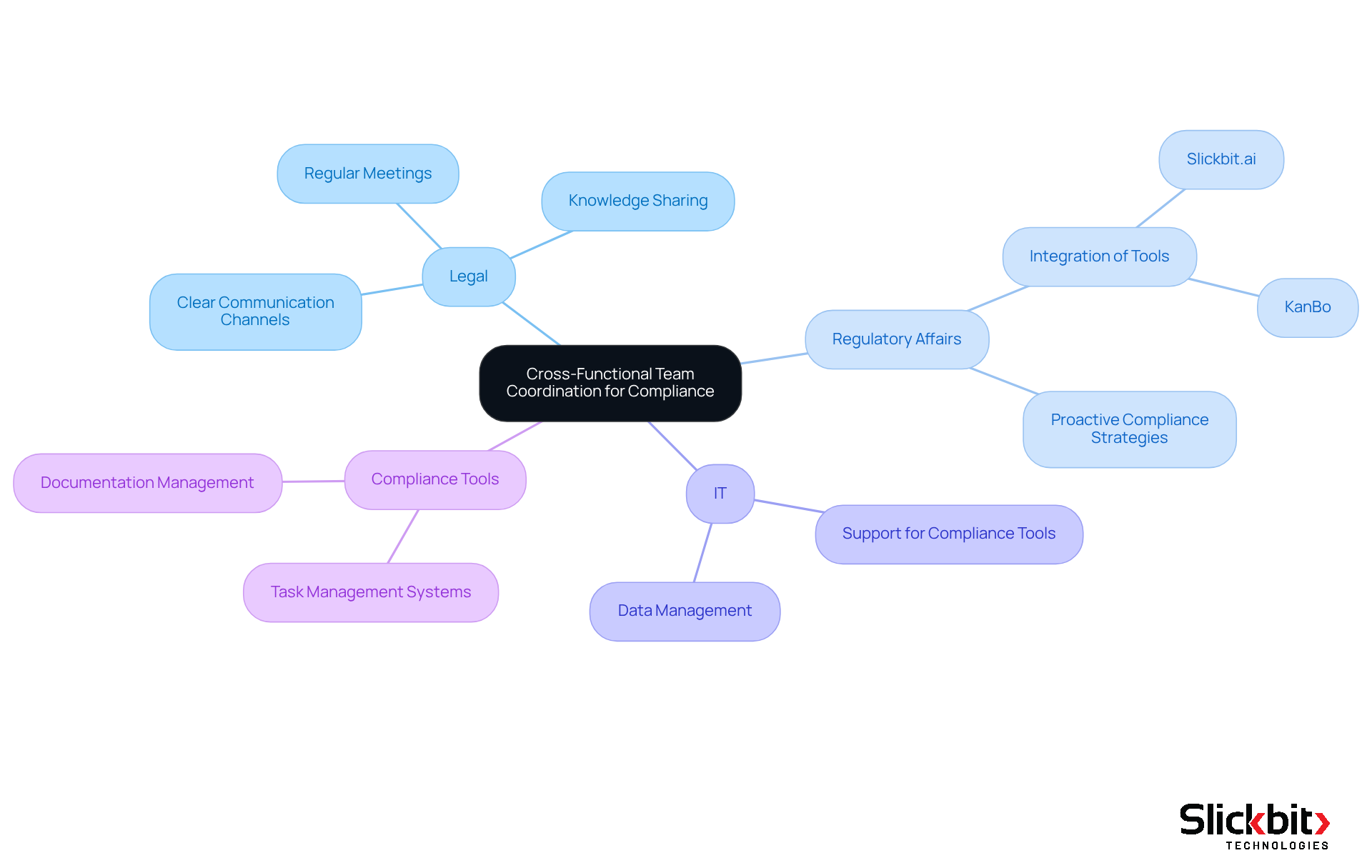
Monitor and Adapt to Evolving Regulatory Requirements
In the rapidly changing pharmaceutical environment, tracking and adjusting to shifting legal requirements is essential for upholding standards. Organizations must establish systems that provide real-time updates on legal changes, enabling them to enhance their adherence strategies effectively.
For instance, subscribing to compliance intelligence platforms allows teams to stay informed about new regulations and their implications. This proactive strategy not only reduces risks associated with a regulatory company but also empowers organizations to respond swiftly to regulatory changes, thereby ensuring ongoing adherence to legal standards.
Furthermore, experts emphasize the growing importance of automation, with 45% of Chief Ethics and Compliance Officers focusing on it to improve adherence processes. By leveraging tools such as Slickbit's Trend 483, which employs AI to identify trends in systemic risks and adherence from FDA 483s, regulatory companies can significantly bolster their frameworks.
This tool facilitates searching, filtering, and viewing complete 483s directly for deeper insights, consequently decreasing the manual workload associated with oversight monitoring. To maximize effectiveness, organizations should evaluate their current compliance tools against the features of robust regulatory tracking software, ensuring they are well-equipped to navigate the evolving regulatory landscape.
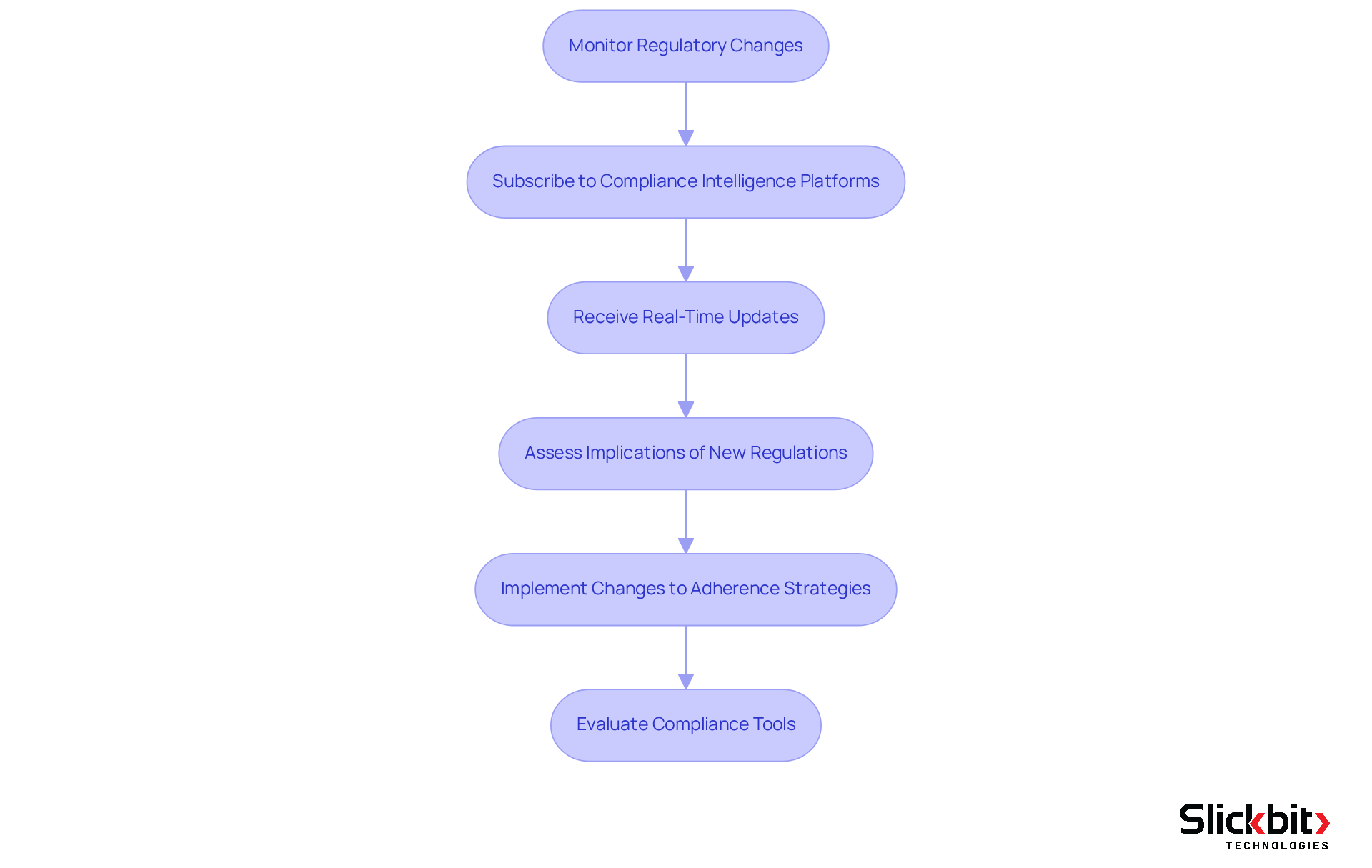
Conclusion
Implementing effective strategies for regulatory compliance is crucial for organizations navigating the complexities of legal frameworks. The insights shared in this article highlight the importance of leveraging innovative technologies, such as AI and custom solutions, to enhance compliance efforts. By adopting these strategies, regulatory companies can not only streamline their operations but also significantly reduce the risks associated with non-compliance.
Key arguments discussed include:
- The benefits of rapid MVP development to validate compliance solutions
- The integration of AI agents to automate workflows
- The necessity of tailored training programs to equip teams with essential skills
- The emphasis on cross-functional collaboration
- The proactive monitoring of evolving regulations
As the regulatory landscape continues to evolve, organizations must embrace these strategies to stay ahead of compliance challenges. By investing in advanced technologies and fostering a culture of collaboration, regulatory companies can transform compliance from a mere obligation into a strategic advantage, ensuring they remain agile and responsive to changing legal requirements. The call to action is clear: prioritize these innovative strategies to enhance compliance and drive operational excellence in the face of regulatory complexities.
Frequently Asked Questions
What is Slickbit.ai and what services does it provide?
Slickbit.ai specializes in rapid MVP (Minimum Viable Product) development for regulatory companies, enabling them to swiftly validate their AI concepts by delivering functional prototypes in as little as four weeks.
How does Slickbit.ai help organizations with regulatory compliance?
Slickbit.ai helps organizations assess regulatory solutions quickly, allowing them to adapt to changes set by regulatory companies while driving innovation and maintaining compliance.
Can you provide an example of how Slickbit.ai's services can be applied?
For instance, a pharmaceutical firm could develop a minimum viable product for an intelligence tool that streamlines adherence checks, significantly reducing time-to-market and enhancing operational efficiency.
What role do AI agents play in regulatory workflows?
AI agents enhance efficiency by automating repetitive tasks such as data entry, document review, and compliance checks, allowing teams to focus on strategic decision-making.
What specific AI agents does Slickbit offer?
Slickbit offers AI-driven assistants like Lumino, which helps pharmaceutical groups obtain precise answers from FDA and global guidance documents, and Vault Redact, which automates the identification and removal of PII and PHI from documents.
How do these AI agents minimize risks in compliance?
These AI agents operate continuously within the regulatory framework, minimizing human error and adapting to the latest regulations while tracking compliance updates in real-time.
Why is the integration of AI into regulatory practices becoming essential?
As expert Narendra Sharma notes, 'AI in adherence is shifting from a competitive edge to a legal requirement,' highlighting the necessity of adopting such technologies to meet compliance standards in today's oversight landscape.
What are the benefits of developing custom AI solutions for regulatory companies?
Tailored AI solutions help regulatory companies efficiently tackle specific adherence challenges, providing actionable insights and automating regulatory reporting processes, thus enhancing their capacity to meet compliance standards.
How do custom AI solutions support existing systems within regulatory companies?
Custom AI solutions can integrate seamlessly with existing systems, such as clinical trial management systems in biotech firms, ensuring compliance with regulations like those set by the FDA.




